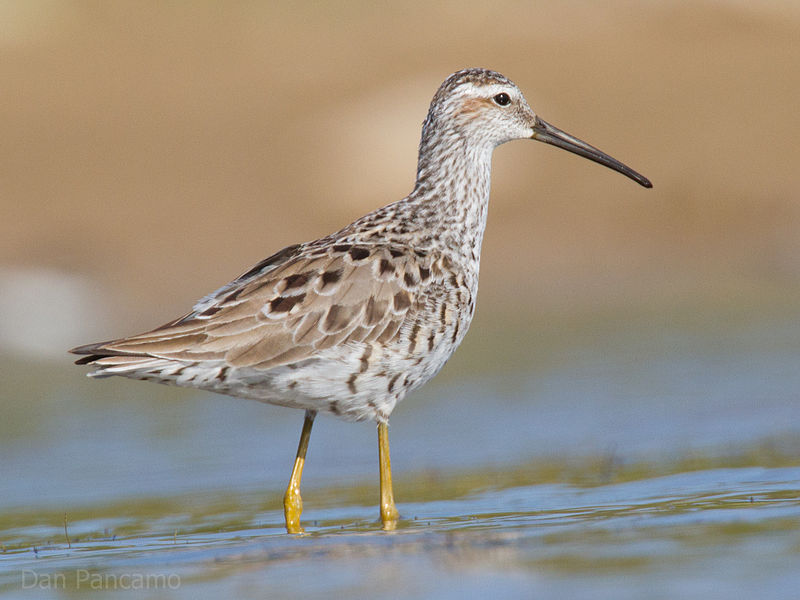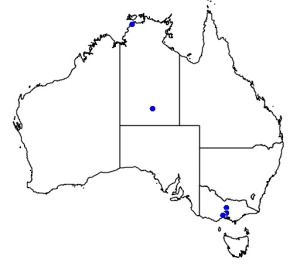Colours
Distinguishing features
It has a �����������������������������������curved bill, long neck, pale supercilium and white rump. �����������������������������������Breeding adults are distinctive, heavily barred beneath, and with reddish patches above and below the supercilium. The back is brown with darker feather centres. Winter plumage is basically gray above and white below.
Juvenile Stilt Sandpipers resemble the adults in their strong head pattern and brownish back, but they are not barred below, and show white fringes on the back feathering. (Wikipedia)
Size
- Up to 22 cm (Length of specimen)
Wingspan
- From 38 cm to 47 cm
Synonyms
Similar taxa
-
Animalia:
Curlew Sandpiper (species: Calidris (Calidris) ferruginea)
The Stilt Sandpiper is readily distinguished from the Curlew Sandpiper by its much longer and paler legs, which give rise to its common and scientific names. It also lacks an obvious wing bar in flight. (Wikipedia)
Distribution
Distribution and habitat preferences
breeds in the open arctic tundra of North America. It is a long-distance migrant, wintering mainly in northern South America. It occurs as a rare vagrant in western Europe, Japan and northern Australia. (Wikipedia)
Diet
They forage on muddy, picking up food by sight, often jabbing at their prey. They mainly eat insects and other invertebrates. (Wikipedia)


